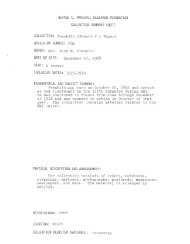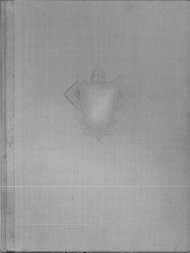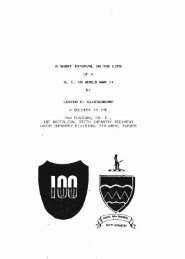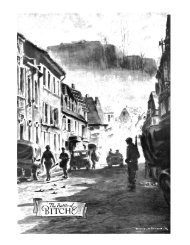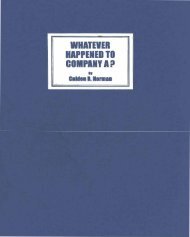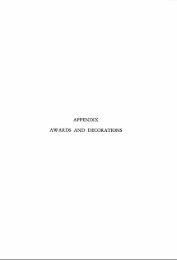Joint Operating Concept (JOC) - GlobalSecurity.org
Joint Operating Concept (JOC) - GlobalSecurity.org
Joint Operating Concept (JOC) - GlobalSecurity.org
Create successful ePaper yourself
Turn your PDF publications into a flip-book with our unique Google optimized e-Paper software.
Appendix I – Executing IW Within Ungoverned or Under-Governed Spaces<br />
While the following was written to describe activities for the GWOT, it provides<br />
sufficient illustration of future DOD activities within this operational<br />
environment. As such it is included in this <strong>JOC</strong> as an appendix to guide future<br />
experimentation and CONOPS development.<br />
Implementing the GWOT Strategy: Overcoming IA Problems 36<br />
“…A key GWOT objective is to keep radical Islamists from regaining state<br />
sanctuary. To the extent that we succeed, the principal GWOT battleground<br />
will occur in states with which the US is not at war, and the principal fight will<br />
be an indirect and low visibility/clandestine one from a US perspective. This<br />
poses a number of challenges for the effective integration of all instruments of<br />
national and international power. In addition to the planning frictions and<br />
compartmentalization problems noted above, there is also the issue of to what<br />
extent the US armed forces will be engaged in this fight. In countries with<br />
which the US is not at war, Department of State and CIA dominate. As a<br />
result, military capabilities that might be brought to bear have been denied<br />
country clearance, or have had their operational freedom severely restricted if<br />
clearance is granted. The current IA system for operations in countries with<br />
which the US is not at war too often defaults to pre-9/11 modes of thinking and<br />
ways of operating and, in any event, is very much dependent on the risk profile<br />
and policy priorities of US Chiefs of Mission and Station. Determining the<br />
extent to which US military capabilities will be brought to bear in these<br />
countries and which <strong>org</strong>anization will own them is imperative.<br />
A first step toward effective command would include the designation of<br />
GWOT operational areas, followed by the establishment of standing CIA-DOD<br />
<strong>org</strong>anizations aligned with these areas. GWOT operational areas would be<br />
both country-specific and sub-regional. Achieving unity of effort across subregions<br />
would permit more effective use of airborne and maritime surveillance<br />
platforms and enable expanded unconventional warfare operations against<br />
trans-national terrorists. There are a number of areas of the world – Pakistan-<br />
Afghanistan, for example – where an integrated sub-regional approach to<br />
operations is vital. CIA-DOD Interagency Task Forces aligned with key subregions<br />
could be commanded by a military officer or a CIA officer, depending on<br />
the dominant character of operations involved. The senior Chief of Station in a<br />
sub-region could be dual-hatted as an IATF commander. Operational command<br />
of IATF components should generally be in the hands of a military or CIA<br />
officer, as appropriate, though cross-<strong>org</strong>anizational teams should be<br />
established when operational circumstances dictate…”<br />
36 Testimony by Michael Vickers, Director of Strategic Studies, before the Subcommittee on Terrorism,<br />
Unconventional Threats and Capabilities of the House Armed Services Committee, 15 March 2006<br />
Appendix I I-1




